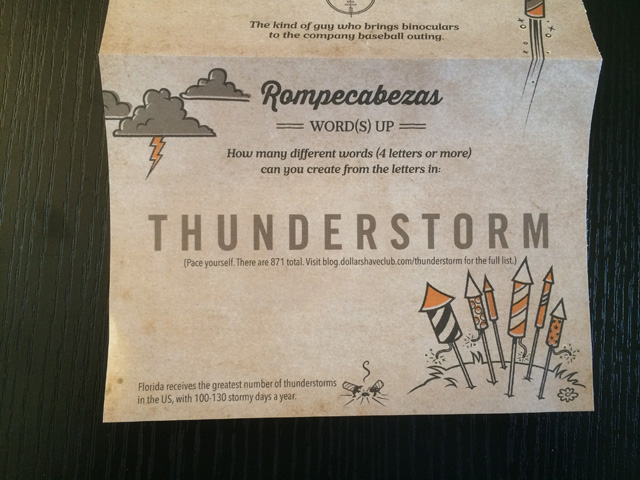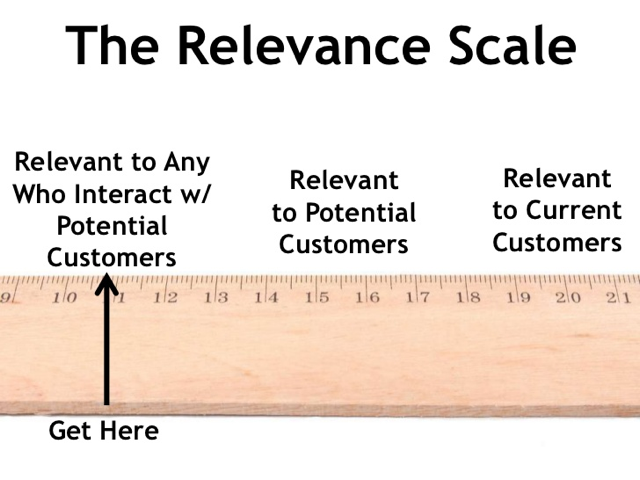- All Posts
- /
- What SaaS Businesses Can Learn from Dollar Shave Club
What SaaS Businesses Can Learn from Dollar Shave Club
Uncategorized-
 Jimmy Daly
Jimmy Daly
-
Updated:Posted:
On this page
There’s a new SaaS in town: Shaving as a Service.
Dollar Shave Club has spent the last several years disrupting the men’s skin care and grooming industry, a $6 billion space that’s ripe for innovative products and new players. The business model is remarkably similar to most SaaS businesses. Customers pay a monthly fee for the service, which they can scale up or down as needed. As it turns out, SaaS businesses could learn a lot from Dollar Shave Club’s meteoric growth. Let’s take a quick look at the business.
- Customers subscribe to one of three plans. Razors are delivered once each month. There are accessory products like shaving cream and lotion that can be added to the plans.

- The company was founded in 2011 with just $35,000. Founder and CEO Michael Dubin has since raised more than $20 million from investors.
- As of June 2014, Dollar Shave Club has more than 650,000 subscribers and, according to Businessweek, “has 45 full-time employees and expects to post $60 million in revenue this year, which would be triple its 2013 haul.”
- They kill it with social media and content. Just watch the video below, which helped launch their explosive growth and now has more than 15 million views.
One obvious difference between Dollar Shave Club and SaaS companies is that the product is physical and delivered by mail. The marketing strategies used by Dollar Shave Club, however, can be easily be applied to any software business. I’m a recent customer, so I thought it would be helpful to walk you through my experience so far, then suggest a few a ways that SaaS businesses can borrow ideas from these marketing geniuses.
How Dollar Shave Club Converted Me
I’d heard of the company (though I can’t remember how) and even visited their site once. I started seeing retargeting ads on Facebook. The ads ranged from practical, like the one below, to comical. Many featured the company’s tagline, “Shave Time, Shave Money.”
Two things happened that ultimately led to my conversion. First, I realized the barrier to entry was extremely low. Even with shipping, my first set of razors cost just $3. Second, I saw that several of my Facebook friends had liked the Dollar Shave Club Facebook page. It was exactly the social proof I needed to take the plunge.

I clicked the Facebook ad and began exploring their site. I wanted to know how this whole process worked, since any subscription I pay for delivers either software or content over the Internet. Same idea but the implementation is obviously very different. In the main site navigation is a link that says “How It Works.” Ah, perfect!
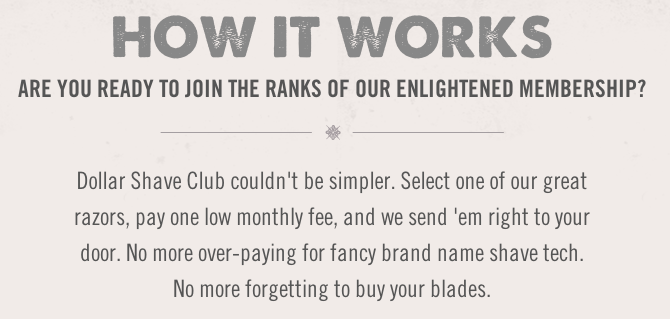
Simple enough. I took another step down the conversion funnel by visiting the pricing page. The cheapest razor, known as “The Humble Twin,” is just $1 per month. Seems to good to be true, right? I continued clicking around the site, learning more about the products and found this description of the razor I was considering purchasing.
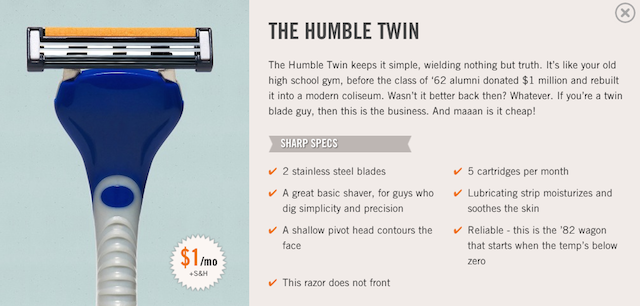
The more time I spent on the site, the more I liked the company. Everywhere I looked, the branding was consistent, witty and engaging. Before I knew it, I was a customer.
The Dollar Shave Club Experience
Although the initial transaction was complete, the marketing was just beginning. At Vero, we are huge proponents of awesome transactional emails, so I was pleased to get this welcome message after my purchase.
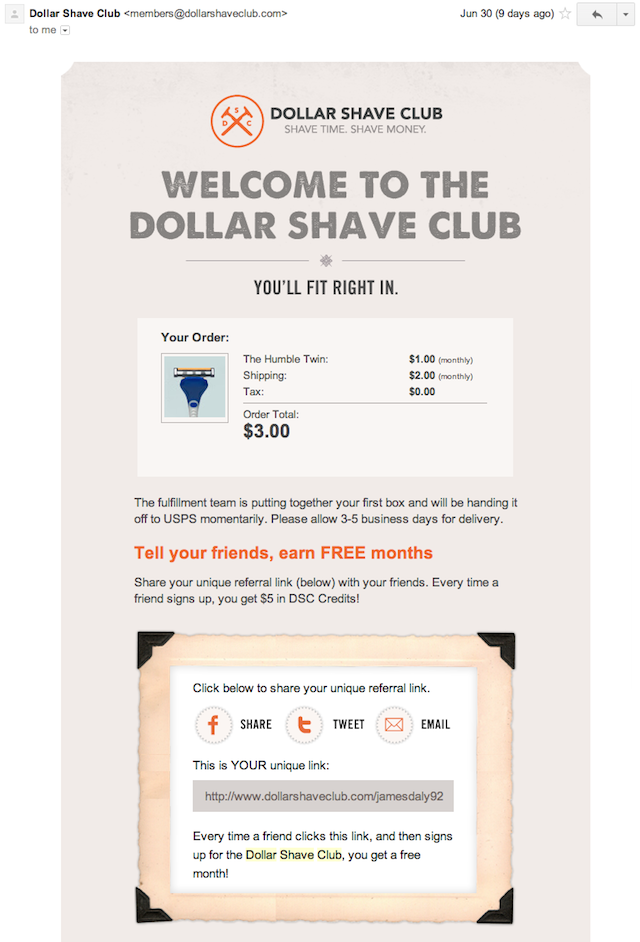
A few quick things about this welcome email that’s awesome:
- It’s simple and straightforward. They welcome me, present a receipt and tell me when to expect my order.
- The branding, as always, is spot on. Colors, typeface, copy … it’s all consistent with the website, their social channels and the materials customers receive in the mail.
- It includes a referral link. I’m a male in my 20’s, essentially a perfect customer. They know that I know many other males in their 20’s who would also be perfect customers. They encourage me to share the link via email or social and potentially earn free stuff.
A few days later, a box comes in the mail with my new razor. Here is what I received.
The box:
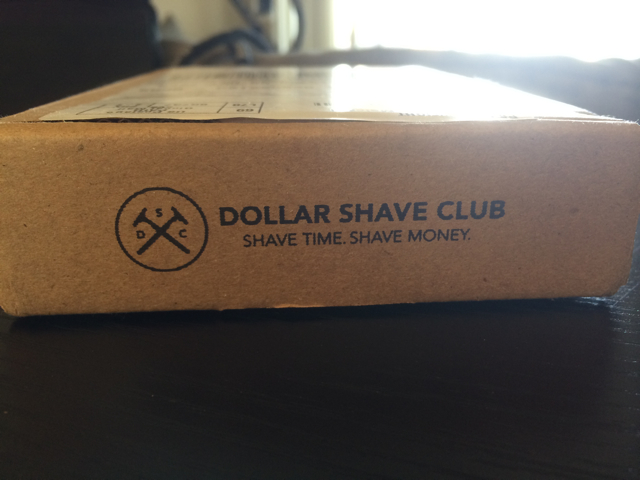
Inside the box:
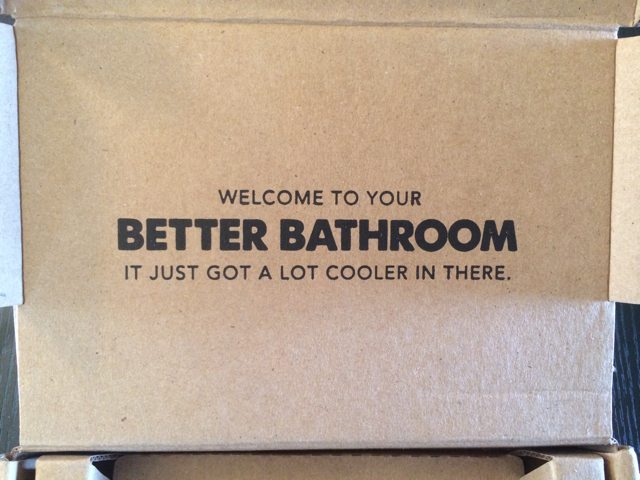
The razor:
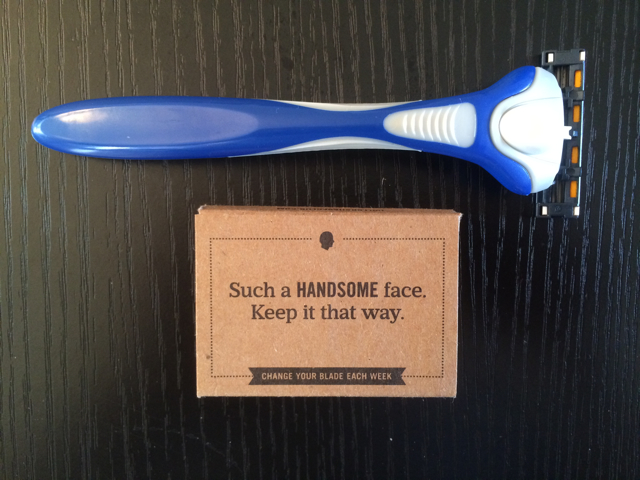
Another welcome note:
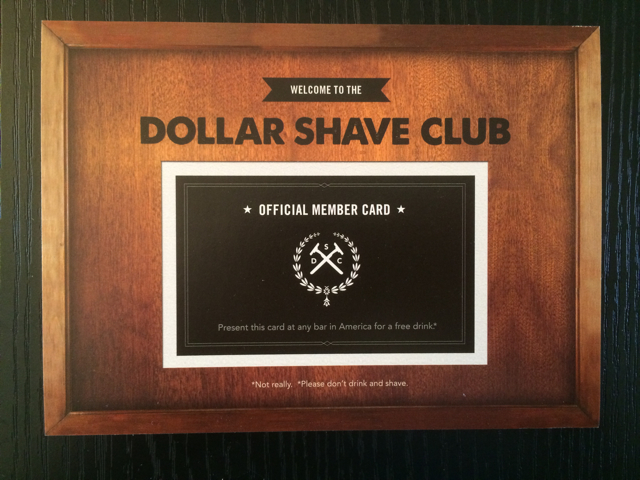
A reminder that I can upgrade:
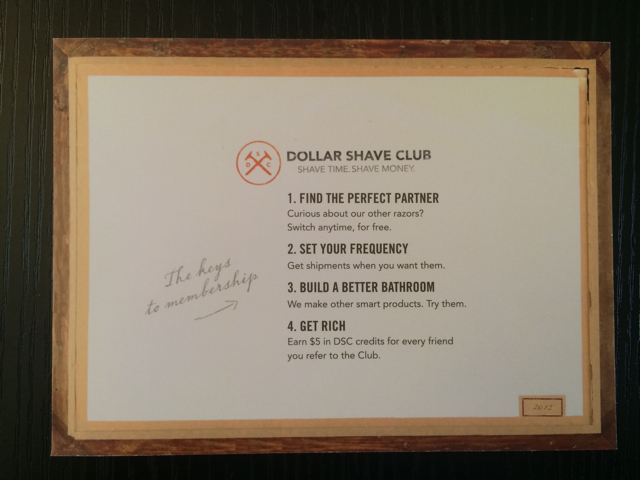
Going for the up-sell:

“Bathroom Minutes” – Dollar Shave Club’s monthly newsletter:

Content FTW!
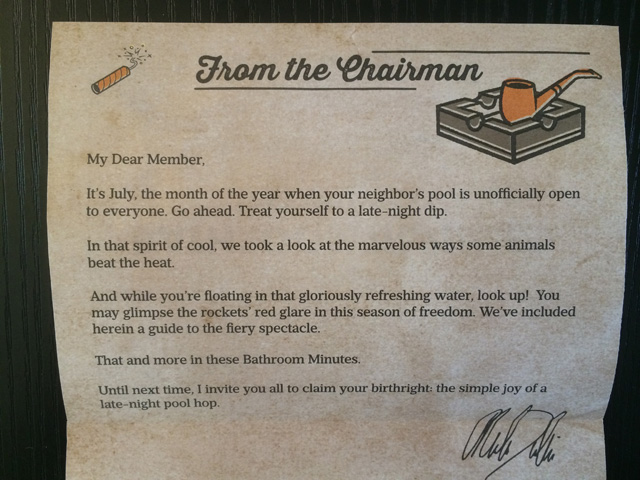
Quote of the month:

Some July 4th trivia:
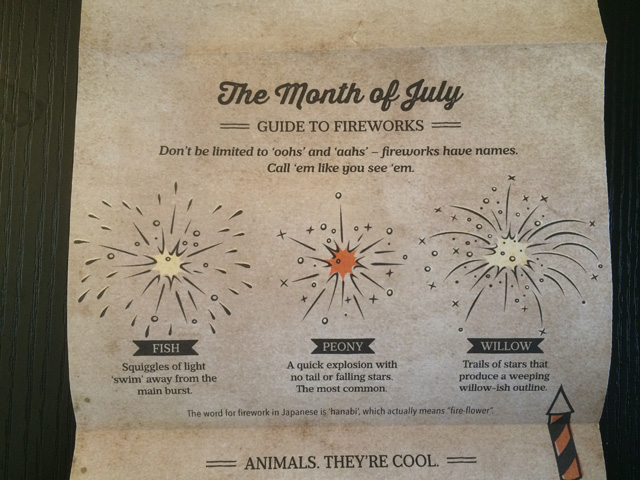
More fun facts (this is great bathroom reading):
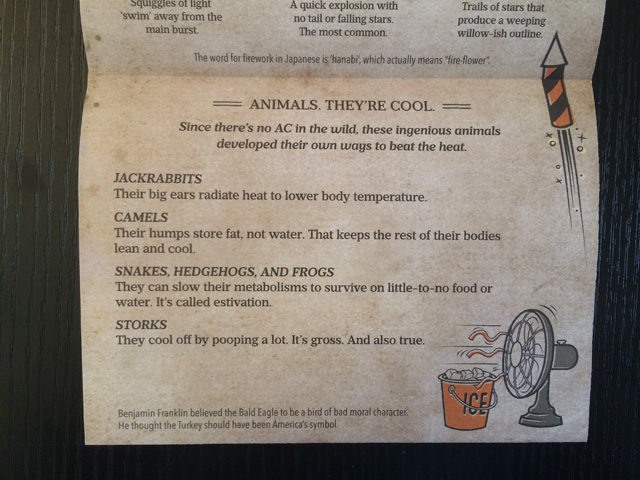
Member spotlight: Dollar Shave Club is helping this customer raise money for a startup:
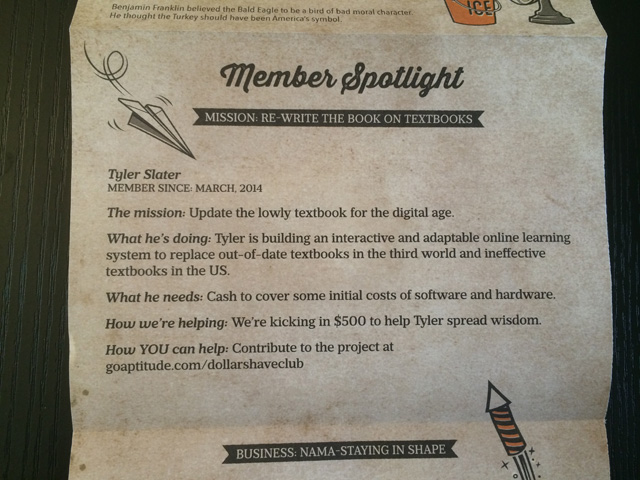
Make that two customers:
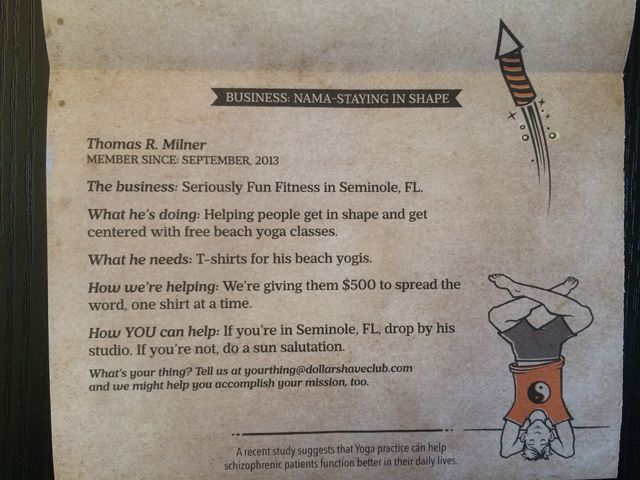
Very important news:
Nice to meet you Jason:

Get the answer on the company blog:
There is a very important reason that I included all these images in the post. The package that I received from Dollar Shave Club each month is transactional. I pay them money, they send me razors. Transaction over.
What’s interesting, and very important, is how great the experience is. They already have my attention so why not take advantage of it? Let’s break it down.
- Once again, the branding is great.
- The simple process is explained to me for the second time, reinforcing the value of the transaction that just occurred.
- Dollar Shave Club goes for the up-sell right away. If you’re going to sell razors, it makes perfect sense to sell accessory products like shaving cream and lotion. (Not pictured above is the free sample of the Shave Butter – it’s really good.)
- It makes so much sense to have content in this package. “Bathroom Minutes” really does make for good bathroom reading and it’s another reminder that Dollar Shave Club delivers value on a monthly basis.
Best of all, Dollar Shave Club has employed all of the suggestions that we included in our guide to transactional email. The guiding principle of all transactional email and direct mail is this: You have attention. Use it.
What You Can Learn from Dollar Shave Club
1. Make the customer experience beautiful.
Did I mention that Dollar Shave Club owns their branding from start to finish and top to bottom? They have chosen to use humor and wit along with comfortable brown and orange tones to represent their brand. Whatever you choose, stick with it.
The also have obviously spent time perfecting their onboarding process. It moves new customers through a simple funnel and surrounds them with the brand, plenty of information and social proof. In short, the entire experience rocks.
2. Turn your transactions into bigger sales and more customers.
If you take nothing else away from this post, let it be this: Transactional messages are one of the most powerful sales tools you have. If you have the attention of a lead or customer, find a tactful way to make them feel good about their association with your business. If your business sends reports, receipts, notifications, updates, newsletters or any other type of email or direct mail, you have a great opportunity to turn attention into more business.
Be careful not to annoy people with salesy messages — that will get you on a spam blacklist lickety split (which will affect your email deliverability) — or overwhelm them with calls to action. Just remind them of the value you provide, make their experience easy and make sure they are open to more communication from you. We’ve written way more about that here, here and here.
3. Don’t get hung up on relevance.
You’ll notice that the content included in the monthly newsletter has absolutely nothing to do with razors and it makes no attempt to sell more razors. Rather, it provides some interesting reading that’s timely and tangentially related to what the company does. What’s important is that it’s interesting.
In Rand Fishkin’s Content Marketing Manifesto, he says that content should exist to build familiarity, likability and trust. If you only write for current customers, you are missing a chance to connect with hoards of other people that they are connected to. (This is exactly why we are writing about razors on an email marketing blog.)
4. Look for opportunities to disrupt your industry.
My favorite part about Dollar Shave Club is how the company started. Two guys were chatting about how outrageously expensive razors are and said, “This sucks, let’s fix it.” In a 2013 Wired article, Steven Levy wrote about Google’s “moon shots” – the gambles they take to make massive gains in their products and their business.
Larry Page lives by the gospel of 10x. Most companies would be happy to improve a product by 10 percent. Not the CEO and cofounder of Google. The way Page sees it, a 10 percent improvement means that you’re basically doing the same thing as everybody else. You probably won’t fail spectacularly, but you are guaranteed not to succeed wildly.
That’s why Page expects his employees to create products and services that are 10 times better than the competition. That means he isn’t satisfied with discovering a couple of hidden efficiencies or tweaking code to achieve modest gains. Thousand-percent improvement requires rethinking problems entirely, exploring the edges of what’s technically possible, and having a lot more fun in the process.
Now that is an exciting way to think about growing a business.
We’re curious to hear your thoughts on how Dollar Shave Club’s success could be replicated in your business. Let us know in the comments.

